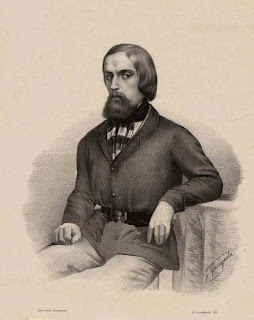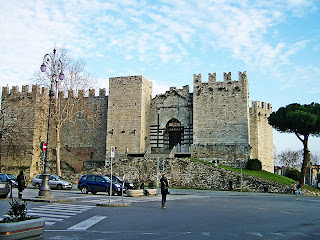Dramatic storm took the life of young literary talent
 |
| Portrait of Shelley by Amelia Curran, painted in about 1819 |
Just a month before his 30th birthday, the brilliant poet of the Romantic era drowned during a sudden, dramatic storm in the Gulf of La Spezia that caused his boat to sink.
His body was later washed ashore and, in keeping with the quarantine regulations at the time, was cremated on the beach bear Viareggio on the Tuscan coast.
Shelley had been living with his wife, the writer Mary Shelley, at a rented villa in Lerici and was returning to his home from Livorno, where he had been arranging the start up of a new literary magazine to be called The Liberal.
He had set sail with two other people on board the Don Juan at about noon on Monday 8 July. His companions were a retired naval officer, Edward Ellerker Williams, and a boatboy, Charles Vivien. Both also perished.
A friend had watched Shelley’s departure until he was about ten miles out of the harbour and then there had been a storm and he had lost sight of the boat.
Three days later one of Shelley’s friends was informed that a water keg and some bottles from the boat had been washed up on to a beach near Viareggio.
Then the terrible news was received that two bodies had been found in the same area.
 |
| Shelley's cremation on the beach near Viareggio as depicted by the French artist Louis Édouard Fournier |
The poet was cremated on the beach under the supervision of his friend, the poet Lord Byron, and others from his circle out in Italy. Byron is said to have gone for a swim while Shelley’s body burned. He is quoted as saying of Shelley: “He was the best and least selfish man I ever knew.”
Shelley’s ashes were later interred in the Protestant Cemetery in Rome.
Travel tip:
The Protestant Cemetery, where Shelley’s remains were buried, is in the rione (district) of Testaccio in Rome. The poet Keats was also buried there after dying of tuberculosis in Rome at the age of 25. Shelley’s three year-old son, William, was buried there after his death in Italy.
 |
| The Grand Hotel Royal in Viareggio is an example of the Liberty style architecture characteristic of the town |
Viareggio is a popular seaside resort in Tuscany with excellent sandy beaches and some beautiful examples of Liberty-style architecture, including the Grand Hotel Royal. There is a monument to Shelley in the Piazza Paolina.
(Photo of the Grand Hotel Royal by Sailko CC BY-SA 3.0)
Home






